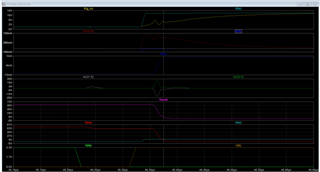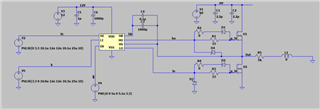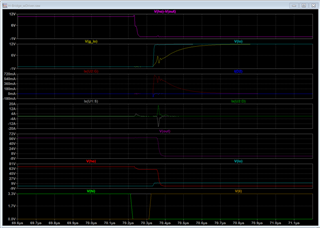Tool/software:
-
Hi / li are input PWM waveforms to driver
-
Ho / lo are output of the driver
-
Vout is the voltage at the 5k load.
-
U1 is the top FET, U2 is the bottom FET. I have plotted the Source current of U1 and drain
-
I(R5) is the current to the resistive load.
-
Ix(U2:G) is the current into the bottom FET. g_lo is the voltage at the bottom FET gate, lo is the output of the driver (I have the standard resistor in parallel with resistor diode filtering on the gates.




